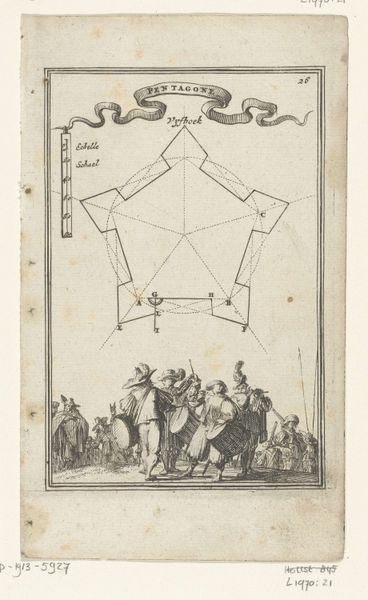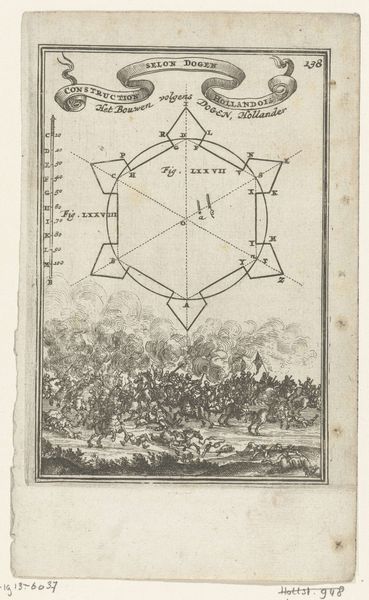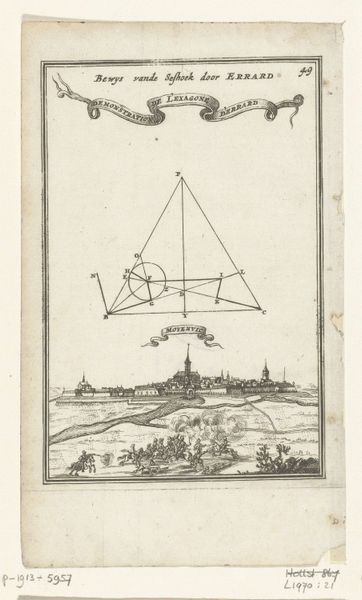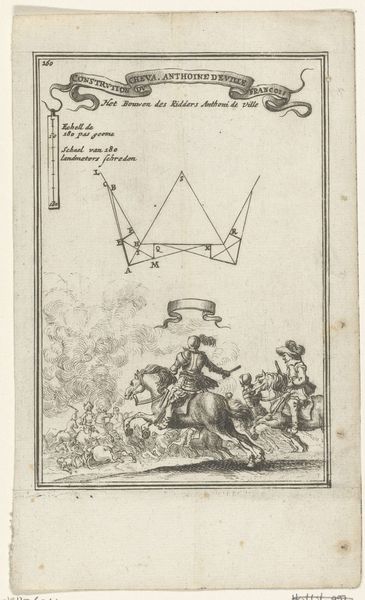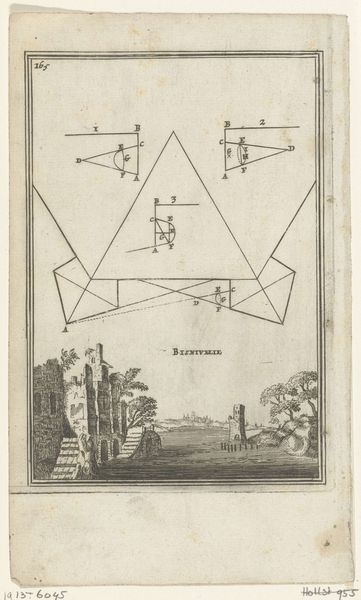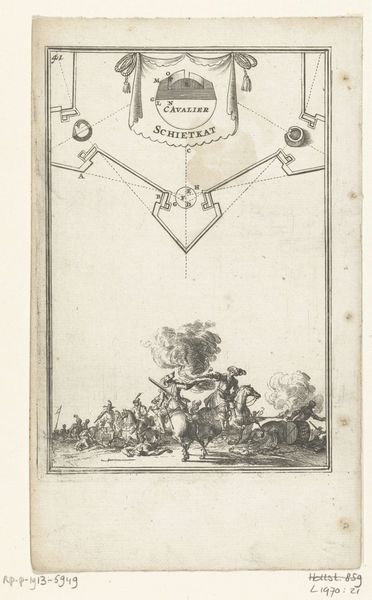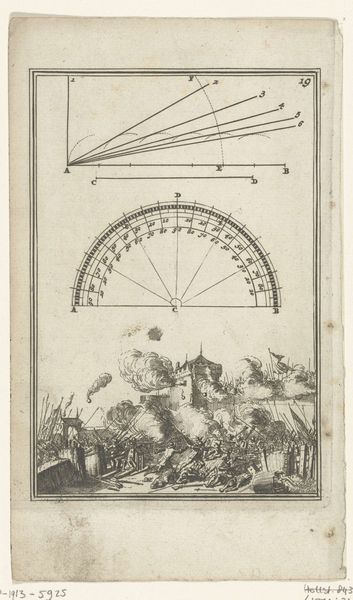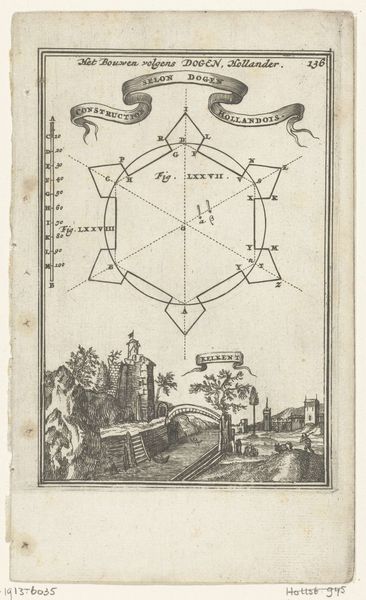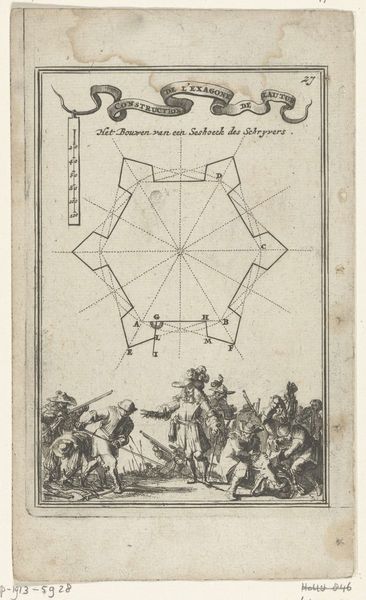
Illustratie voor 'Den Arbeid van Mars' van Allain Manesson Mallet 1672
0:00
0:00
romeyndehooghe
Rijksmuseum
print, engraving
#
baroque
# print
#
old engraving style
#
figuration
#
pen-ink sketch
#
line
#
pen work
#
history-painting
#
engraving
Dimensions: height 186 mm, width 105 mm
Copyright: Rijks Museum: Open Domain
Curator: Before us we have an engraving from 1672, titled 'Illustratie voor ‘Den Arbeid van Mars’ van Allain Manesson Mallet’, produced by Romeyn de Hooghe. It's part of the Rijksmuseum's collection. It’s an intriguing piece combining mathematical precision with the chaos of war. Editor: My first impression is that of a study in contrasts. The rigid geometry at the top half feels cold and detached, especially juxtaposed with the turbulent scene of battle rendered below. The pen work certainly captures movement, though! Curator: The geometry relates directly to the fortifications of war and represents an abstracted design of what engineers and architects of the period perceived of an “ideal” defensive configuration. De Hooghe produced this engraving as part of Allain Manesson Mallet's treatise, and in the historical context of numerous ongoing wars in Europe at the time, it certainly holds weight. The ideal form rendered at top relates to war depicted below it. Editor: That’s helpful to contextualize it; I was struck by how disjunctive the visual elements appeared at first, with these flat geometric lines contrasting the energetic renderings below. But I see the interplay now, the suggestion of controlling conflict, or harnessing mathematical rationality to overcome, the messy contingencies of battle. What of the symbols you perceive? What's being culturally memorialized in its forms and relationships? Curator: We have a clear attempt at rendering both earthly conflict and intellectual endeavor within the very same frame. We should consider it's not only a rendering of geometric construction, but it represents how order might be superimposed, perhaps falsely, onto the volatile world that humankind is compelled to inhabit. To me, the engraving, through its specific choices, depicts the hubris of seeking simple formulas to solve such humanistic disasters as war. Editor: Yes, you bring a great tension to the piece, the push and pull between calculation and contingency, the promise of a rational science and the chaos of earthly existence. A powerful rendering of this ambivalence through contrasting representational vocabularies! Curator: Indeed! It leaves me pondering how we, centuries later, still grapple with similar delusions, constantly searching for a system to quell conflicts with simple top-down edicts or force. Editor: And I see that the past continues to shape the present. By giving form to the ideal, it exposes and interrogates, with unexpected clarity, the imperfect structures of humanity.
Comments
No comments
Be the first to comment and join the conversation on the ultimate creative platform.

